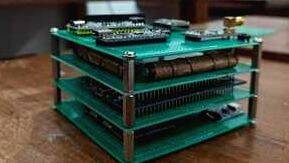

THIRUVANANTHAPURAM: A group of students from Barton Hill Government Engineering College, Thiruvananthapuram, are moving towards the realization of their dream of building their own satellite, to be launched by ISRO. They aim to construct a baby CubeSat named 'Bartosat' and a payload. The final drafting stage has been reached and construction will commence soon. The objective is to deliver space images and information to Earth at a low energy and cost.
In January, ISRO successfully launched the WESAT, built by students of Poojappura LBS Women's Engineering College. Following their footsteps, the efforts of Barton Hill students are underway. Teacher Anish K. John is leading the project, and upon completion, it will be handed over to ISRO for launch, targeted early next year.
The onboard computer for controlling the satellite's operations is being developed in collaboration with the Australian space company 'Hex 20' at Technopark. The MoU is set to be signed this month, and production will be carried out at Valiyamala IIST.
'LoRa' for image capture
A wireless technology called LoRa (Long Range Technology) will be used to transmit images from space.
This is the world's first attempt to capture space images using LoRa.
While a university in Spain previously used LoRa for a satellite launch, no footage was captured.
The launch will occur at a height of 400 km above the Earth's surface.
The camera attached to the payload will capture footage and transmit it through LoRa.
40 students, 4 lakhs
The project has a working capital of 4 lakhs received through the Techup Fund of the college. After the design phase, additional funds will be sought from the government. Forty students from the Mechanical, Electronics, IT and Electrical departments are involved in the project, selected through a competitive examination. Fourth-year students Rahuldas and Gokul are leading the team. Aseem Shah, an alumnus and VSSC scientist, along with Ashwin from the company Qualcomm, are providing guidance.
Baby Bartosat
The CubeSat measures 10 cm in length, width and height.
Due to its compact size, it will also help reduce air pollution.
Manufacturing time and costs are minimized.
Operation will be powered by solar cells.
'Bartosat' stands for 'Barton Hill Satellite'.